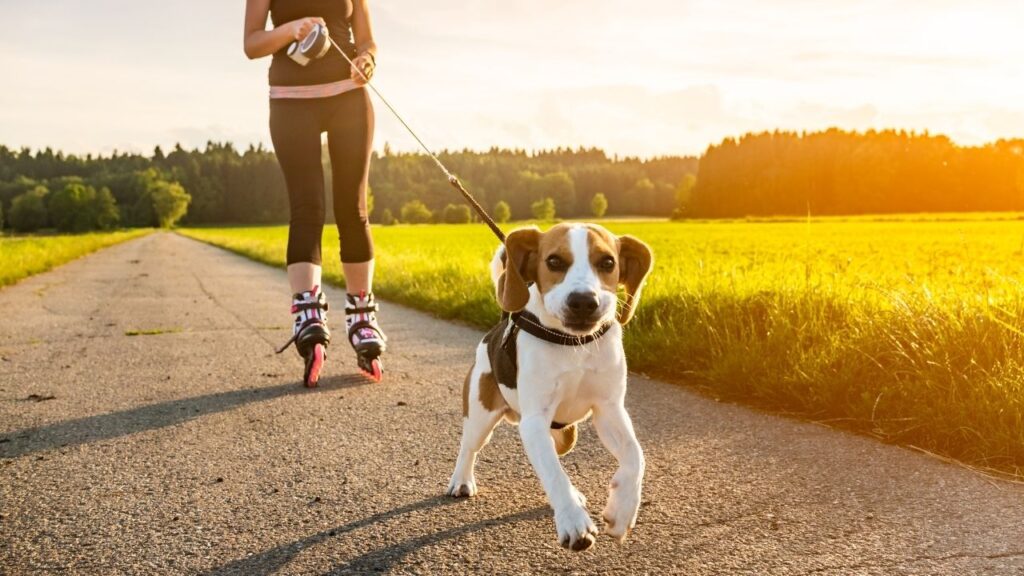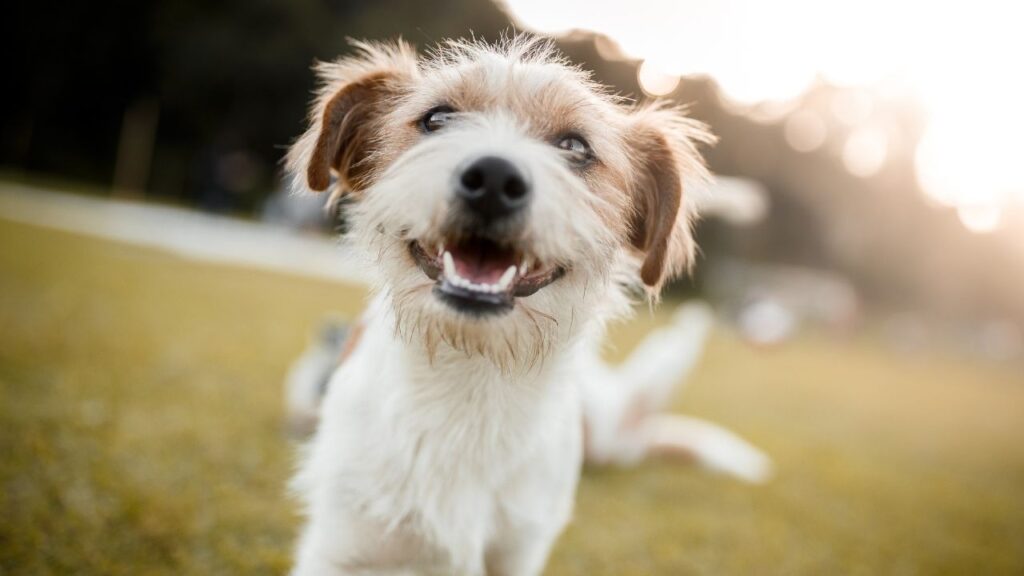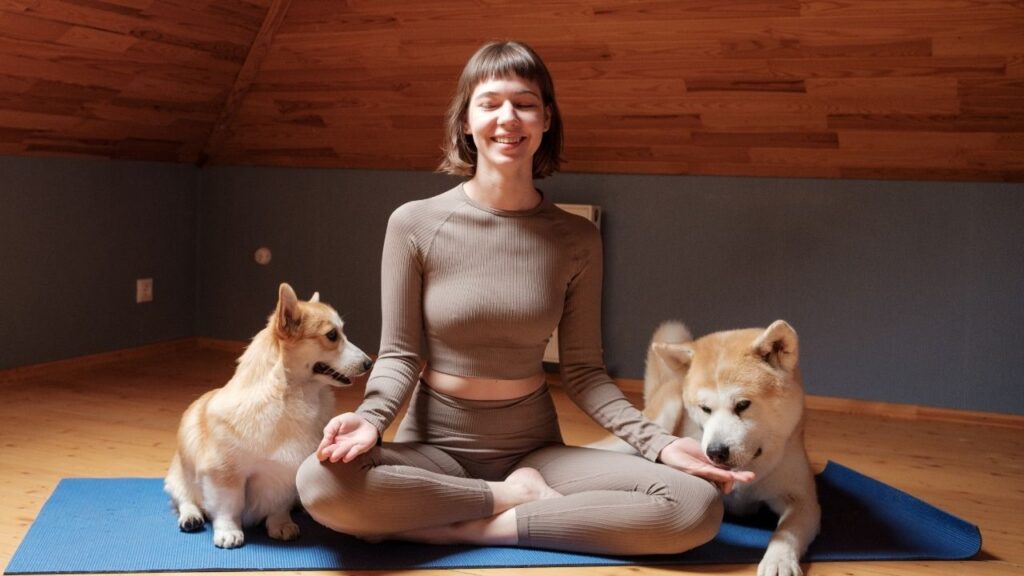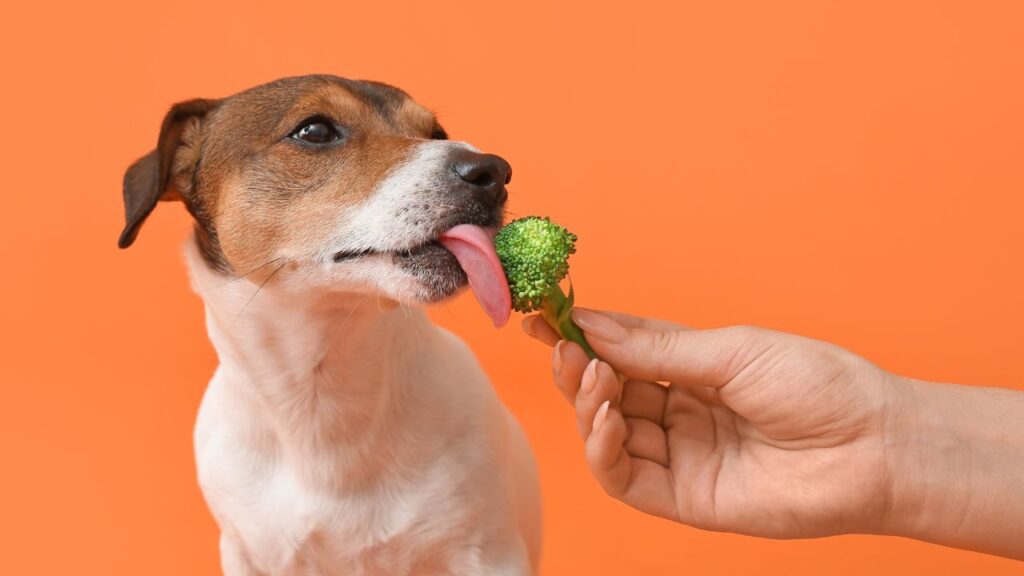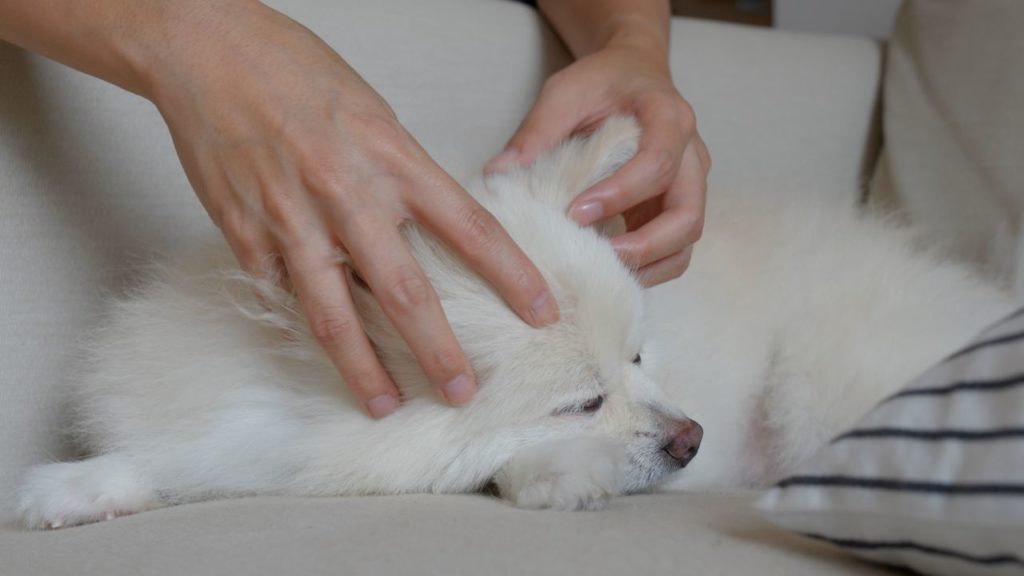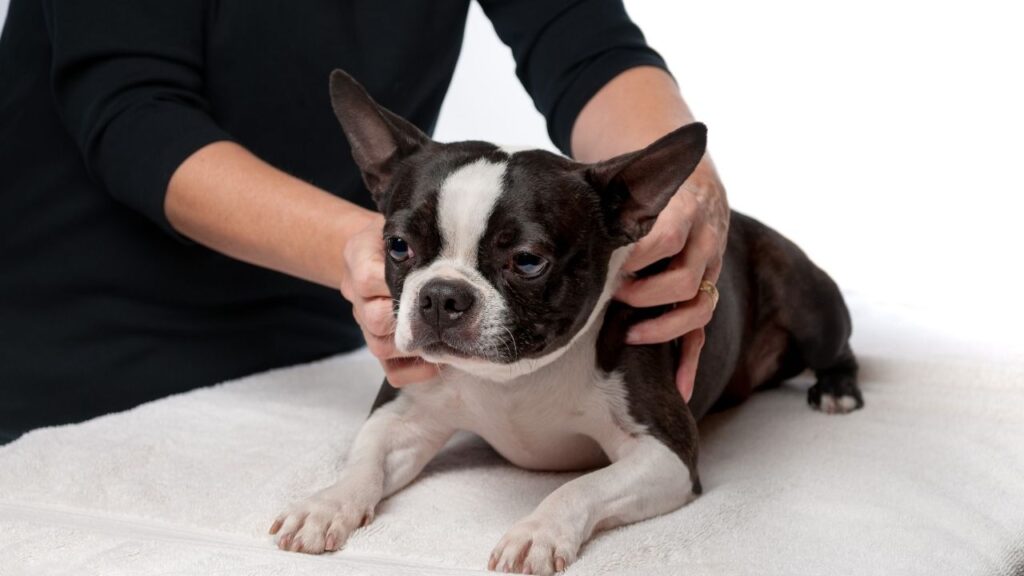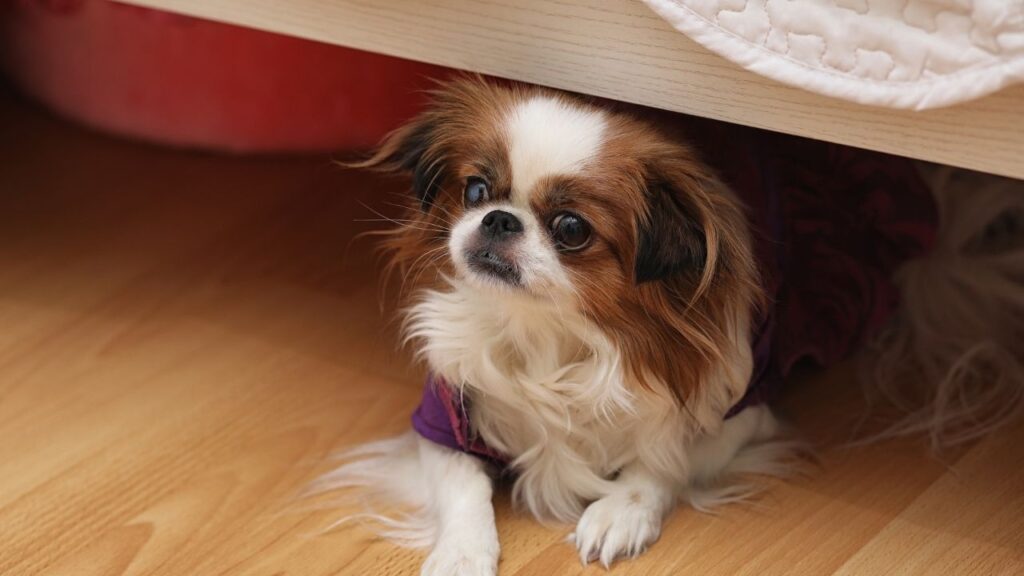Decrease Stress and Bond with Your Dog Through Training
All dogs can learn new skills and tricks at any age, and dog training can be enjoyable for both you and your pet.
Key Takeaways
- Yes, an older dog can be trained, and training helps to keep their minds sharp.
- You can train an older dog that has never been trained just like you would a puppy, but you may need to be more patient.
- Find rewards that are meaningful to the dog and start with really simple skills to get the dog engaged in learning.
- No age is too late to train a dog.
- It is not harder to train dogs as they get older. The things that motivate them may change, but with patience, persistence, and the help of an experienced trainer you can figure out what makes your dog tick.
Training Your Dog
Work with your dog to learn something new! Learning a new skill is exciting and helps exercise the brain and teach your dog how to think.
The goal of these sessions is to have fun for both you and your pet, and there might be fun new tricks or skills to show off along the way. You will also find that training affects the way that your dog communicates with you.10
Keep Sessions Short
Training sessions should be short. Depending on your pet’s physical and mental health, sessions may only be 5 minutes and, in most cases, no longer than 15 minutes at a time.
Exercising the brain can be more exhausting than physical exercise.
Don’t let what we perceive as a short 5 minute session fool you, there is a lot of brain power that goes into that time. Exercising the brain can be more exhausting than physical exercise. There is a reason people are exhausted after a final exam where all you do is sit in a chair!
Training sessions can be repeated during the day depending on your dog’s energy and your time.
Be Positive – This is for Fun!
Training sessions should use positive reinforcement, rewarding your dog for the behavior that you want.
Dogs who are trained with more aversive methods (such as yelling at or physically correcting the dog when she does something wrong) exhibit more stress behaviors, have higher cortisol (stress hormone) level post-training, and are more “pessimistic” during training.11
Think of it this way: these sessions should be something your pet looks forward to.
Positive Reinforcement
Reinforcement can be done with a verbal “yes” or clicker (more on clicker training later) followed by a yummy treat. The treat can later be weaned out but helps motivate your dog to use their brain power to try and figure out what is wanted until the new skill is learned.
If you have a toy-driven dog, you can use play as a reward instead of food, letting them play with the toy for about 30 seconds to a minute.
The clicker or verbal praise marks the behavior you want, and the treat/toy helps incentivize your dog to repeat the behavior.
Train from Home or In Classes
Training sessions do not have to be in a formal setting; they can be done in the comfort of your home.
Dogs who are immunosuppressed (such as those with cancer) need to be cautious going to places with a lot of dogs because their immune system cannot fight as well as a normal immune system. Training at home limits your dog’s exposure to contagious diseases and parasites.
What Should I Teach My Dog?
It doesn’t matter what you decide to train your dog to do. The key element is that you and your dog work together, exercise your dog’s brain, and bond.
Tricks can be a great place to start, as they are low-pressure, even for detail-minded humans. Start with something simple, like shaking paws, and then see where you and your dog go from there.
Start simple, with household manners or handling skills.
Or, brushing up on previously learned household manners can help make daily life more pleasant.1
- Have your dog sit before you open the door to go out for a walk.
- Practice sending them to a mat, crate, or other safe space for short stays during meals.
You can also work on cooperative care skills that will make veterinary appointments less stressful.
- Teach your pet to choose to stand for a veterinary exam by standing on a nonskid bathmat or doormat.
- Teach them to put their head on your hand or their paw to have their eyes and ears examined.
- You can teach them to “open wide” for their teeth and mouth to be examined.
- Remind them that crates can be fun places by putting one out and rewarding them for entering and settling down.
Teaching these skills allows your dog to feel like they have a choice about participating in an exam, and can help make veterinary visits a whole lot less stressful for you and your pet.1
Asking your pet for their cooperation and having them choose to have a physical exam or blood drawn is an invaluable skill, especially for dogs going to multiple visits.
The Benefits of Dog Training
Training your dog has many benefits, both for ease of daily life and for your dog’s mental and emotional well-being.
Your Dog Knows What to Expect
Cooperative care training gives your dog some control over what is being done in order to get a routine procedure/exam performed.2 She knows what to expect and can say no by getting off her mat, not taking a treat, or not performing a skill.4
Skeptical about why you would want your dog to be able to say no? There are good reasons!
- Allowing your dog to say “no” decreases their stress in the moment.
- It allows them to have an out before stress escalates to a growl, snap, or bite.1
- “No” may not be the final answer … your dog may just need a break to circle around the room and then go back and try again, or to have another area examined and then come back to the challenging task.
Making Exams Safer
For dogs who just straight up don’t like to be handled by strangers, practice using a muzzle at home. This is also a great skill for all dogs, as any dog can bite when in pain.
Train your dog to put their nose into the muzzle voluntarily so the muzzle is not scary nor a punishment, and it is not linked to something painful.1 This will make wearing a muzzle at the vet’s office familiar instead of scary.
Decrease Stress
Training and knowing what is expected of them can decrease our pets’ stress. Decreasing stress in our dogs’ lives, especially when ill or recovering, is an important part of the healing process.
Decreasing stress helps with healing.
A link has been shown that chronic stress causes an increase in cortisol (stress hormone) levels which promotes the growth of tumors.14 The stress hormones decrease the ability of the immune system to function at its normal capacity and affect the epigenetics of the tumor microenvironment, allowing the tumor to grow.14
Happy Dog
Dogs who have more training and “jobs” are generally seen as happier. Studies have found that people perceive assistance dogs with a job as being happier than pet dogs.3
Dogs like to be active physically and mentally and to be good at the things they do. Think about the things your dog naturally enjoys doing to figure out her purpose and “job.”
- For some dogs, this might be retrieving the newspaper every morning and fetching various items throughout the house for you.
- For others, their “job” might be agility or obedience training or locating family members and other pets when needed.
Improved Human-Animal Bond
A dog who behaves and has had training is associated with numerous benefits for their relationship with their humans. These include:12
- A stronger human-animal bond
- Increased satisfaction with dog ownership
- Keeping the dog for their lifetime
Brain Health
Yes, you can teach an old dog new tricks! Training can help keep your senior dog sharp.
Older dogs often start to have cognitive decline around the age of 8 or older, however it can vary depending on the breed.8
Signs of cognitive decline can be:6,8
- Wandering aimlessly, especially at night
- Agitation
- House soiling
- Decreased interaction with other household pets
- Decreased interaction with owners
Human studies have shown that exercising the brain is as important as exercising the body for cognitive health and mood.7 Cognitive therapy and enrichment (I.e., training) is one aspect of improving canine cognitive dysfunction.6,7,13
Exercise is important for the brain, not just the body.
Examples of cognitive exercises to work your dog’s brain are:9
- Puzzles
- Hiding treats
- Walking in a new area
- Playing with a new toy
- Snuffle mats
- Playing hide and seek
- Letting them play in a kiddie pool
Kate Basedow, licensed veterinary technician and dog training expert, covers training and many other things that help improve life quality for dogs with cancer on DOG CANCER ANSWERS.
When to Not Train Your Dog
Training is appropriate for any healthy dog, no matter their size or age. However, choose tricks/skills/behaviors that are feasible for your dog to set them up for success. Once your dog has mastered a skill you can start to add in harder ones if they are healthy enough to do so.
What do we mean by setting your dog up for success? It depends upon the dog.
- A dog who is having trouble getting up or down should not be doing tricks/skills that involve them getting up and down (unless prescribed as part of a physical rehabilitation plan).
- Instead do something simple like put a treat in one hand and play the “pick the hand” game by letting them just nose the hand that the treat is in.
It is better to do less than more when a dog is recovering from surgery or medical procedures.
- For at least the first few days or longer depending on your veterinarians’ instructions they just need to sleep and recover.
- If you have a dog who wants to please you more than anything, she will probably not tell you when she is tired and cannot do more and will likely overdo it.
Dogs who have just had surgery, and sometimes chemotherapy, or who are painful, nauseous, or sick are likely to not be interested in training sessions.
If your pet is not interested in playing with you, just let them rest. Recovery takes enormous energy in its own right, so let her body have the energy to heal. You can see how she is tomorrow.
How to Do It: Dog Training Basics
Luring, capturing, shaping, clicker training – oh my! These methods and terms may seem overwhelming at first, but start with one that you think will work for you and your dog.
You will see that there is a fair amount of overlap between these training methods, so don’t worry if the “system” that makes the most sense to you and your dog feels like a blend of several methods.
Don’t worry about getting training right or blending methods. Use what makes the most sense to you and your dog.
You can also use combinations of training techniques, picking the approach that best fits the behavior you are working on.
Tips for Success
No matter which training method(s) you are using, there are some key things to keep in mind to ensure that your dog has a good time.
- Keep training sessions short. 5-15 minutes one to three times a day is plenty depending on your pet.
- Watch for any signs of stress or that your dog is overwhelmed and needs to go slower or have less time per session. Signs of stress can be panting with the corners of their lips tight and pulled back (they almost look like they have a grimace), lip licking (especially a lick that goes over their nose), looking at you and looking away, or walking away during the session.
- If your dog is confused, break the skill into smaller pieces to help her succeed.
- Always end sessions on a high note. If your dog is struggling with a new skill, ask her to do something she knows well, or that is easier, so that she can succeed.
Luring
Luring is using a treat or toy to guide the dog into the desired position, then rewarding her when she gets into that position.
This is repeated until the skill is proficient, then a verbal or hand signal is paired with the skill, and the lure faded out gradually once your dog has learned the verbal cue.
Capturing
Capturing means following your dog around and praising/rewarding when they do what you want (for example, giving your dog a treat every time she sneezes if you want to teach her to sneeze on cue).
Rewarding behaviors your dog offers makes them want to offer that behavior again. When she starts to repeat a behavior intentionally, you can start to pair a verbal cue to that behavior so she will learn to give that behavior on cue.
Shaping
Shaping is like playing the hot or cold game. You know what the end goal is, and you reward your dog as she guesses closer to what you want.
There are often many steps to get to the end goal. Initially, you will reward your dog for anything remotely close to the goal behavior, then as she learns one step, you can move on to the next step.
“Shape” your dog’s behavior until they get the whole sequence figured out.
For example, if you are shaping your dog to pick up her bowl:
- Start by praising and rewarding if she looks or moves toward the bowl.
- Repeat several times, then start requiring her to get closer to the bowl before rewarding.
- Next wait for her to touch the bowl – any contact is fine at first.
- Then you can up the ante by only rewarding when she touches the bowl with her nose, and build up to her grabbing the bowl and then picking it up.
Want to get into the nitty-gritty of learning theory? Shaping is based on operant conditioning. Your dog (and you!) is more likely to repeat a behavior that she gets rewarded for, and less likely to repeat one that is ignored. There is a whole lot more you can learn about operant conditioning and the science behind shaping, but that is beyond the scope of this article.
Clicker Training
Clicker training is a specific method of shaping. The click of the clicker serves as a marker to tell the dog what exact thing you want and are rewarding.
Why a Clicker?
Why use a clicker instead of just saying, “Yes”? The click provides better timing and is a more consistent and clearer marker than a verbal marker, making it easier for your dog to figure out what you want.5
Associate Clicks with Treats
Before you can start clicker training, you need to “load” the clicker so your dog understands that click = cookies/treats. To teach this, you click and immediately give a treat (or whatever reward your dog likes best).
Repeat until your pet looks for that treat when you click. This is generally learned very quickly, and most dogs think it is a lot of fun.
Click to Train
Once your dog knows what the click means, you can start training. Settle on a simple task, such as the pick-up-your-bowl skill we discussed above.
- First click and reward when your dog moves toward or interacts with the bowl in any way.
- Then build up to clicking and rewarding when she touches the bowl, and go from there.
Your dog will learn that seeing the clicker means she will be learning something new. Many dogs start offering behaviors as soon as they see their clicker. It can be amazing just how creative your dog can be – as she masters the concept of clicker training, offer her new objects and see what she comes up with to do with them!
Tips for Dogs Who Don’t Like Loud Sounds
If your dog is noise-sensitive, pick a clicker that is not too loud. You can also use a pen with a retractable nib with a clicky button on the end. Those pens have a softer “clicker” sound.
Also, be sure that you do not accidentally put the clicker too close to your dog’s head, as this can scare a noise-sensitive dog.
More Advanced Dog Training Resources
In this age of modern technology, there are many online classes to help guide you through training programs and physical books, too. Find what works for you!
Some examples are:
Fenzi Dog Sports Academy https://www.fenzidogsportsacademy.com/ – There are classes on all kinds of training, cooperative care, tricks, free blogs, a free podcast, and some free ebook downloads.
Do More with Your Dog by Kyra Sundance https://domorewithyourdog.com/DogTricks/about/kyra-sundance/ – This is an online trick training course.
Idiot’s Guides: Dog Tricks https://www.amazon.com/Tricks-Idiots-Guides-Debra-Eldredge/dp/1615647678 – Book with step-by-step instructions and photos on basic training as well as many tricks.
A Note About Treats
Treats can add extra calories, especially for dogs who are not as active and are not burning calories. Watch your dog’s weight. You may need to vary treats. Use lower calorie treats for easier skills or ones they already know, and higher reward treats (which are usually higher calories) to help motivate them to do harder tasks.
You may also need to decrease their food a little bit to help offset weight gain. Depending on your dog you can use some of their regular food as treats, or turn mealtimes into training sessions.
Use Dog Training to Relax Even When Your Dog Has Health Issues
Training can help decrease your stress levels as well as your dog’s. It can make your life together more enjoyable.
Don’t give up on your dog due to age, illness, or disability. Every dog can learn something new!
Do not let age, blindness, hearing loss, or a missing limb deter you from trying. You may have to be a little bit creative to figure out what things your dog can do and wants to learn.
Learning is never “done” or “finished” – it is a lifelong journey with skills and tricks you learn along the way.
- Dixon S, Fraser L, Edlund S. What is cooperative care? The IAABC JOURNAL. https://iaabcjournal.org/cooperative-care/
- Todd Z, Becker M. Wag: The Science of Making Your Dog Happy. Vancouver: Greystone Books; 2020.
- Paris Emmanuelle Gibson & Jessica Lee Oliva (2021): Public Perceptions of Australian Assistance Dogs: Happier and Better Used Than Companion Dogs, Journal of Applied Animal Welfare Science, DOI: 10.1080/10888705.2021.1931869 https://www.tandfonline.com/doi/abs/10.1080/10888705.2021.1931869
- Lees R. What is cooperative care in veterinary medicine? VIN. https://veterinarypartner.vin.com/default.aspx?pid=19239&catId=102901&id=10777652. Accessed March 5, 2023.
- What is clicker training? What Is Clicker Training? | Karen Pryor Clicker Training. https://www.clickertraining.com/whatis. Published October 17, 2011.
- Calder, C. Behavior and the senior dog. VIN. https://www.vin.com/cattledog/default.aspx?pId=26671&id=10751937.
- Blanchet S, Chikhi S, Maltais D. The benefits of physical activities on cognitive and mental health in healthy and pathological aging. Bienfaits des activités physiques sur la santé cognitive et mentale dans le vieillissement normal et pathologique. Geriatr Psychol Neuropsychiatr Vieil. 2018;16(2):197-205. doi:10.1684/pnv.2018.0734
- Chapagain D, Range F, Huber L, Virányi Z. Cognitive Aging in Dogs. Gerontology. 2018;64(2):165-171. doi:10.1159/000481621
- How to exercise your senior dog’s brain. TopDog Health. https://topdoghealth.com/how-to-exercise-your-senior-dogs-brain/. Published March 20, 2022.
- Marshall-Pescini S, Passalacqua C, Barnard S, Valsecchi P, Prato-Previde E. Agility and search and rescue training differently affects pet dogs’ behaviour in socio-cognitive tasks. Behav Processes. 2009;81(3):416-422. doi:10.1016/j.beproc.2009.03.015
- Vieira de Castro AC, Fuchs D, Morello GM, Pastur S, de Sousa L, Olsson IAS. Does training method matter? Evidence for the negative impact of aversive-based methods on companion dog welfare. PLoS One. 2020;15(12):e0225023. Published 2020 Dec 16. doi:10.1371/journal.pone.0225023
- Herwijnen IRV, van der Borg JAM, Naguib M, Beerda B. Dog ownership satisfaction determinants in the owner-dog relationship and the dog’s behaviour. PLoS One. 2018;13(9):e0204592. Published 2018 Sep 20. doi:10.1371/journal.pone.0204592
- Bray EE, Raichlen DA, Forsyth KK, et al. Associations between physical activity and cognitive dysfunction in older companion dogs: results from the Dog Aging Project. Geroscience. 2023;45(2):645-661. doi:10.1007/s11357-022-00655-8
- Hong H, Ji M, Lai D. Chronic Stress Effects on Tumor: Pathway and Mechanism. Front Oncol. 2021;11:738252. Published 2021 Dec 20. doi:10.3389/fonc.2021.738252
Topics
Did You Find This Helpful? Share It with Your Pack!
Use the buttons to share what you learned on social media, download a PDF, print this out, or email it to your veterinarian.
